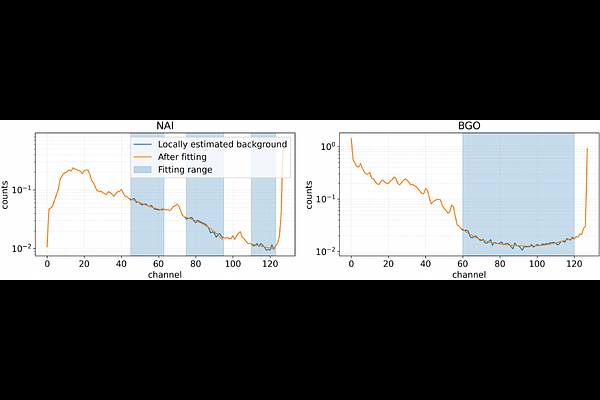A New Search Pipeline for Short Gamma Ray Bursts in Fermi/GBM Data -- A 50% Increase in the Number of Detections

A New Search Pipeline for Short Gamma Ray Bursts in Fermi/GBM Data -- A 50% Increase in the Number of Detections
Ariel Perera, Barak Zackay, Tejaswi Venumadhav
AbstractIn this paper, we present the development and the results of a new search pipeline for short gamma-ray bursts (sGRBs) in the publicly available data from the Gamma-Ray Burst Monitor (GBM) on board the Fermi satellite. This pipeline uses rigorous statistical methods that are designed to maximize the information extracted from the Fermi/GBM detectors. Our approach differs substantially from existing search efforts in several aspects: The pipeline includes the construction of template banks, Poisson matched filtering, background estimation, background misestimation correction, automatic routines to filter contaminants, statistical estimation of the signal location and a quantitative estimator of the signal probability to be of a cosmological, terrestrial, or solar origin. Our analysis also includes operating the pipeline on "time-slided" copies of the data, which allows exact significance assessment and $p_{\text{astro}}$ computation, akin to the state-of-the-art gravitational waves (GW) data analysis pipelines. Depending on the spectral properties of the bursts, our pipeline achieves a signal-to-noise ratio (SNR) improvement by a factor of 2 to 15 over the onboard GBM triggering algorithm. This enhancement increases the detectable volume for sGRBs and results in an approximate 50% increase in sGRB detections in the 2014 GBM dataset. As a further consequence of the sensitivity increase, we detect hundreds of soft gamma-ray flares of galactic origin. This improved sensitivity enhances the chances of detecting fainter, off-axis GRBs that would likely fall below the standard triggering thresholds. Applying this pipeline to the full GBM archive is expected to expand further the joint sGRB-GW detection volume.